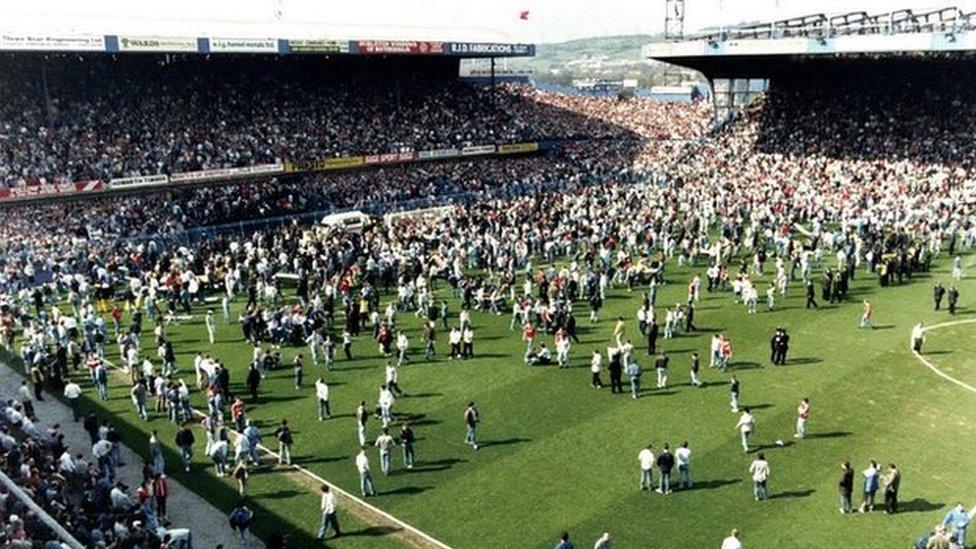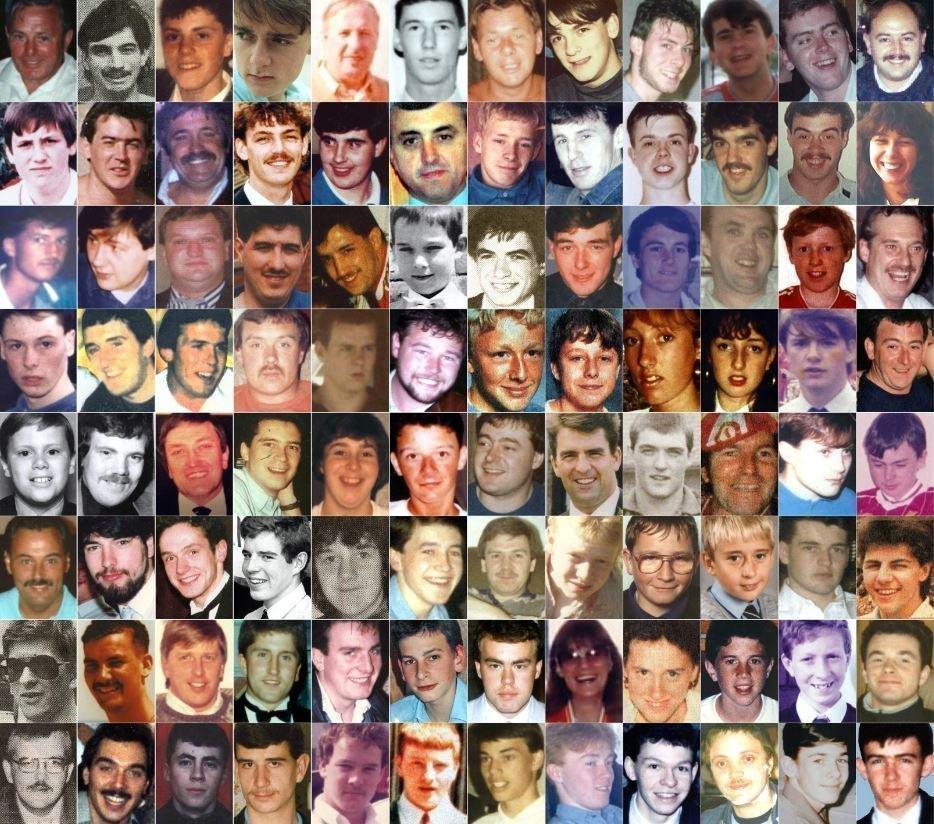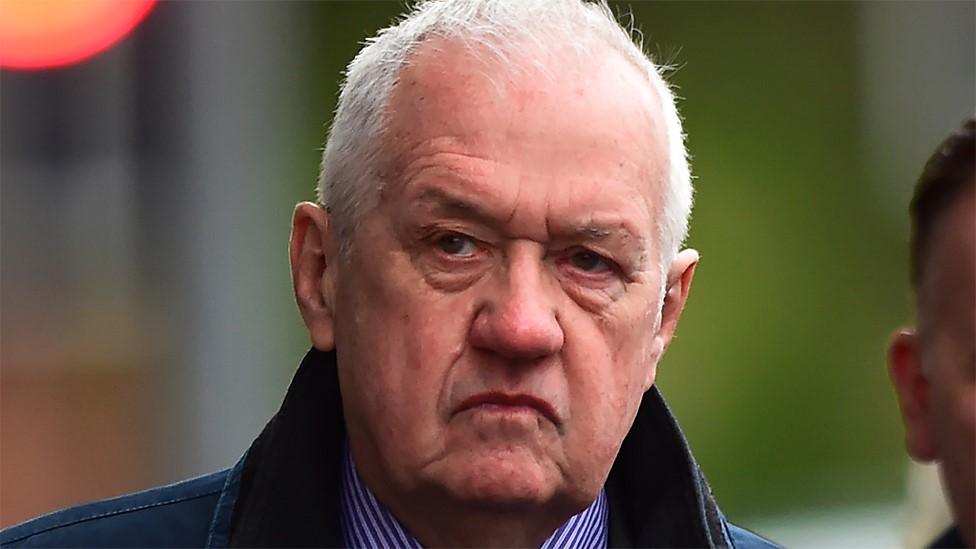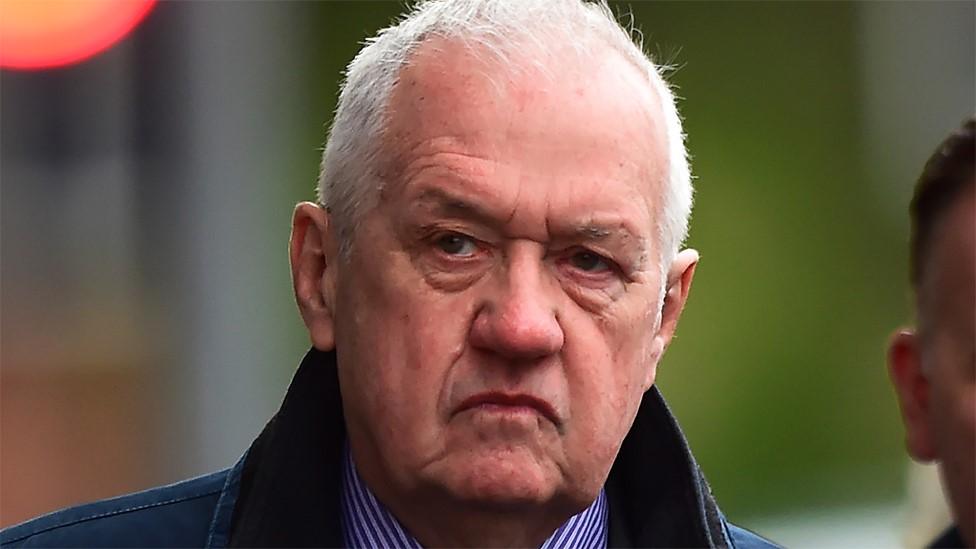Hillsborough terrace capacity 'should have been cut'
- Published

Ninety-six fans died as a result of a crush at Sheffield Wednesday's ground
The capacity of the Leppings Lane terrace at Hillsborough was overestimated by 1,800, the retrial of Hillsborough match commander David Duckenfield has heard.
Structural engineer, John Cutlack, said its capacity should have been cut after fences were installed.
Mr Duckenfield, 75, denies the gross negligence manslaughter of 95 people in the 1989 football stadium tragedy.
Preston Crown Court also heard removing some crush barriers caused problems.
Mr Cutlack, who has almost 40 years' experience of designing sports facilities, said Leppings Lane still had a 7,200 capacity in 1989 - that was set when it received its ground safety certificate in 1979.
The engineer, who most recently worked on Tottenham Hotspur's new stadium, said it should have been reviewed, after radial fences were installed in the 1980s, dividing the terrace into "pens."

The people who lost their lives in the Hillsborough disaster
He said gates allowing fans to move between pens were installed in the radial fences at the back of the terrace, but when it was full it would be, "well-nigh impossible" to get back up the terrace from the front.
He also said when some crush barriers were removed in 1986 this created a gap that was too wide, allowing too many people to surge forward on to another barrier close to the front of pen three.
The court heard that barrier 124a was "deformed" in the crush that occurred.
Mr Cutlack calculated that 5,426 was the figure capacity for the terrace and this should have been inserted on the safety certificate.
He estimated the capacity figures for the two central pens as 678 and 778, but the jury was told the club figures for the pens were 1,200 and 1,000.
Ninety-six people died as a result of a crush in pens three and four of the terrace, in the FA Cup semi-final on 15 April 1989.
The trial continues.

David Duckenfield was the match commander at Sheffield Wednesday's Hillsborough stadium in 1989
- Published15 October 2019

- Published14 October 2019

- Published11 October 2019

- Published10 October 2019

- Published7 October 2019
